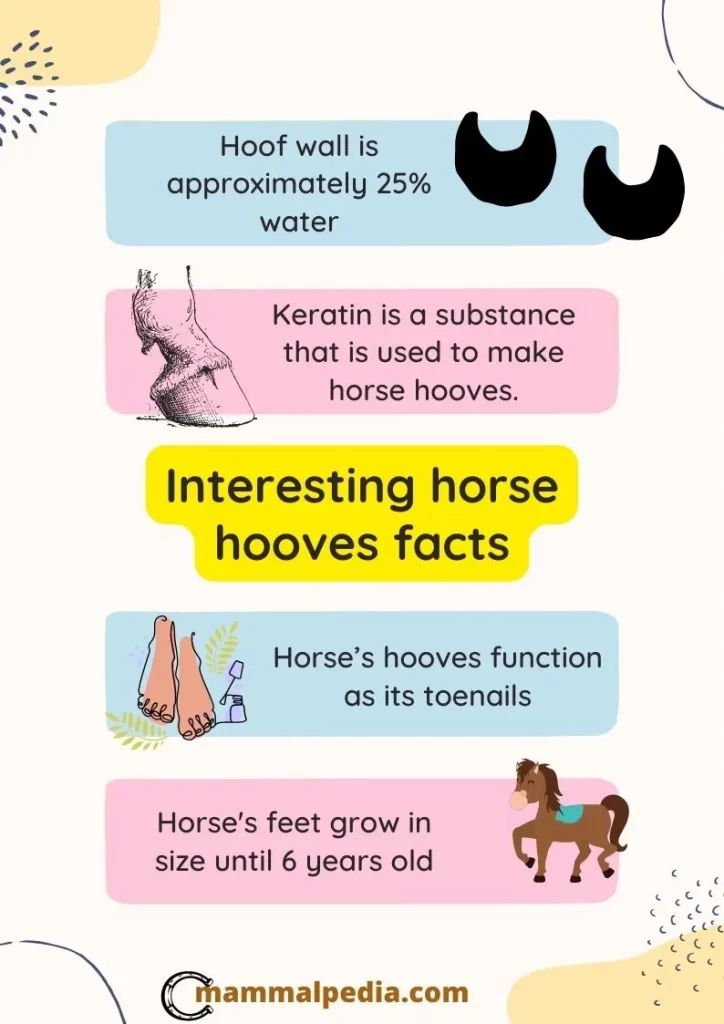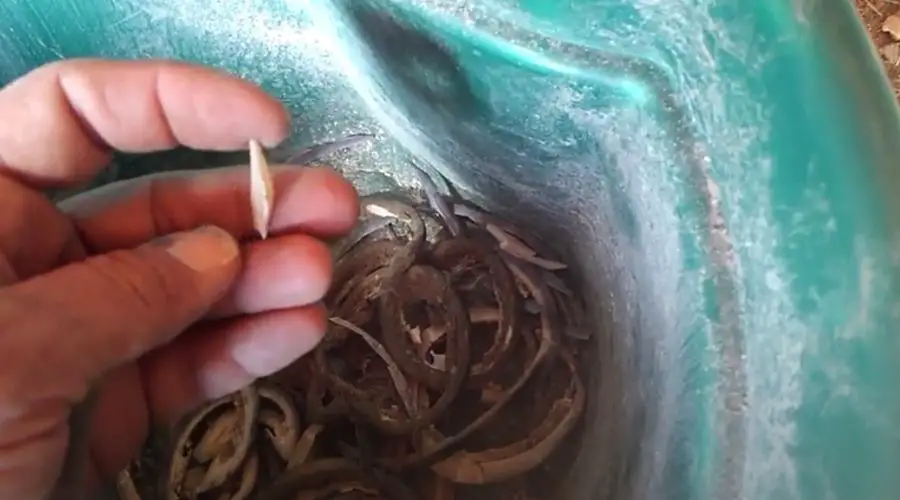Does your pet keep looking for horse hoof shavings whenever the farrier leaves?
Does he love the stinky and disgusting clippings? Many animals like horses have hooves, which are strong skin coverings that guard their toes. Hooves are not the same as feet. They are much like toenails.
Hooves help horses to travel for a prolonged time on rough terrain without injuring their foot. Considering that they include calcium, iron, and vitamin, freshly hoof trimmings are totally healthy for the majority of canines to nibble on or consume.
Listen:
Dogs must avoid eating large and big chunks of horse hooves since they are difficult to bite on and could cause tooth injury.
If your dog wants to consume horse hooves, you should offer them little scraps to munch on. But are horse hooves good for dogs in general? Are there any risks? Let’s jump into the article and understand it in detail.
Composition of horse hooves
Do you want to know how?
Similar to how people have toenails, a horse’s hooves function as its toenails. Keratin is a substance that is used to make horse hooves. This protein is present in mammals that safeguard your fingernails and epidermis.
Horse hoof walls only contain around 25% water, giving them an extremely grainy and abrasive texture. The farrier cares for your horse’s hoof to prevent it from trauma and inflammation. He also looks after your horse’s feet and trims its hooves.

Related: This quick but complete guide provides everything you need to know about horse hoof trimming tools and how to use them.
How can benefit horse hooves for dogs?
Look:
Dogs can benefit from hooves in these ways:
Dental health – Chewing is beneficial for your pet’s teeth because it helps remove calculus and plaque buildup from their enamel. Fortunately, a healthy hoof could be useful in this situation.
Because it is long-lasting, it could be used to help canines maintain their oral hygiene.
Really: They may get rid of tartar from the enamel of their teeth just by nibbling and biting on the horse hooves. Regularly using hooves for this purpose is good for your dog’s oral health.
High in protein – The best part about healthy fresh hooves is that they do not have any calories. They are beneficial for your dog’s health.
They are packed with keratin, calcium, and other vital nutrients that would keep your dog’s nails, teeth, and bones strong. It implies that they are a healthy protein-rich treat for your pet.
What kind of dogs could most benefit from hooves?
Let’s dig a little deeper.
Every kind of growing and adult dog can benefit from horse hooves. Horse hooves are strong and natural treats suitable for dogs above 9 months of age who have developed their adult teeth.
This treat is not advisable for pups or senior canines because of its hard texture. It helps to keep your pet mentally engaged for a long time. It keeps them entertained and releases their pent-up energy which is required for every dog.
Note:
Researchers observed a fall in inactivity among 16 canines in a study by keeping track of their general behavior. Exploratory activity improved as social engagement and other forms of social interaction declined. These findings could suggest that hooves provide unique excitement and concentration.
Additionally, it appears that biting on hooves decreases the buildup of gingivitis and plaque and promotes bowel movements. Hooves shouldn’t be offered to canines that still have their baby teeth or canines that are in mentally imbalanced settings to avoid tooth abscesses and disputes.
Intra- and inter-rater reliability
| Behavior | Intra-rater | Inter-rater | ||||
| R | ß0 | ß1 | R | ß0 | ß1 | |
| Coprophagy (frequency, N = 34 values) | 1.000 | 0.000 | 1.000 | 1.000 | 0.000 | 1.000 |
| At fence (frequency, N = 34 values) | 0.999 | −0.004 | 0.993 | 0.997 | 0.160 | 0.957 |
| Social play (frequency, N = 19 values) | 1.000 | 0.000 | 1.000 | 1.000 | 0.000 | 1.000 |
| Exploration (frequency, N = 19 values) | 0.988 | 0.012 | 1.042 | 0.988 | 0.012 | 1.042 |
| Other activity (frequency, N = 19 values) | 0.998 | −0.159 | 1.012 | 0.997 | −0.078 | 1.028 |
| Inactivity (frequency, N = 19 values) | 1.000 | 0.000 | 1.000 | 1.000 | 0.000 | 1.000 |
Any risks associated with feeding hooves to dogs?
Let’s dig a little deeper.
Too hard
The truth:
The main problem with canines chewing horse hooves is that they are too hard. Your dog will find it difficult to gnaw on it and it might harm its teeth. Keep in mind that once a dog begins chewing on anything, it won’t stop.
Their teeth may fall or break at this point, which would cost a lot of money to get proper treatment. Additionally, the pet will suffer as well!
Not only does it damage their teeth, but also causes severe swelling in the gums which leads to bleeding and gum disorders. As a result, an increasing number of dog parents are searching for alternatives that are gentler for their pets to chew. (Related causes and prevention of horse hoof bleeding after trim.)
Limited nutritional value
Fact:
A dog’s diet won’t benefit significantly from the keratin found in horse hooves. They are more likely to suffer tooth injury as a result and without any benefit. For this reason, dog parents like using pig hooves.
Avoid offering canines horse hooves that have just been dewormed. It could make the dog sick. Pig hooves are excellent since they provide the same benefits as horse hooves without damaging the pup’s teeth.
This helps you to make certain the canine has a wonderful experience playing with the hooves while protecting its teeth from injuries.
Risk of chemical use
You should stay with natural horse hooves. However, there’s a risk that some organizations could apply chemicals to clean horse hooves without warning you. Every pet parent would want their pet to stay away from toxins.
If you notice a hoof smells clean and fresh then know that it has been washed with harsh chemicals. Selecting a trustworthy organization is the ideal method to prevent this.

How to supplement a dog’s diet with hooves?
The trimmings from a newly chopped hoof could be extremely supple and soft, whereas a tougher hoof could be stiff and dead.
In my experience:
If you want to feed your canine some hoof trimmings, make sure they are clean and chopped up into little portions. This would prevent the huge, dry chunks from getting trapped in the throat or the intestines.
Related: Learn how to keep your horse’s hooves healthy, strong, and resilient by using these surprising home remedies for cracked horse hooves.
Conclusion
Getting to know more about your dog’s health and what’s right for them gives owners a sense of security. Dogs should not be given jagged, tough hoof clippings.
If you think your canine wants some hoof, stick to tiny, recently trimmed slices. After that, pick up the remaining clippings and carefully throw them out of the reach of your pets.



